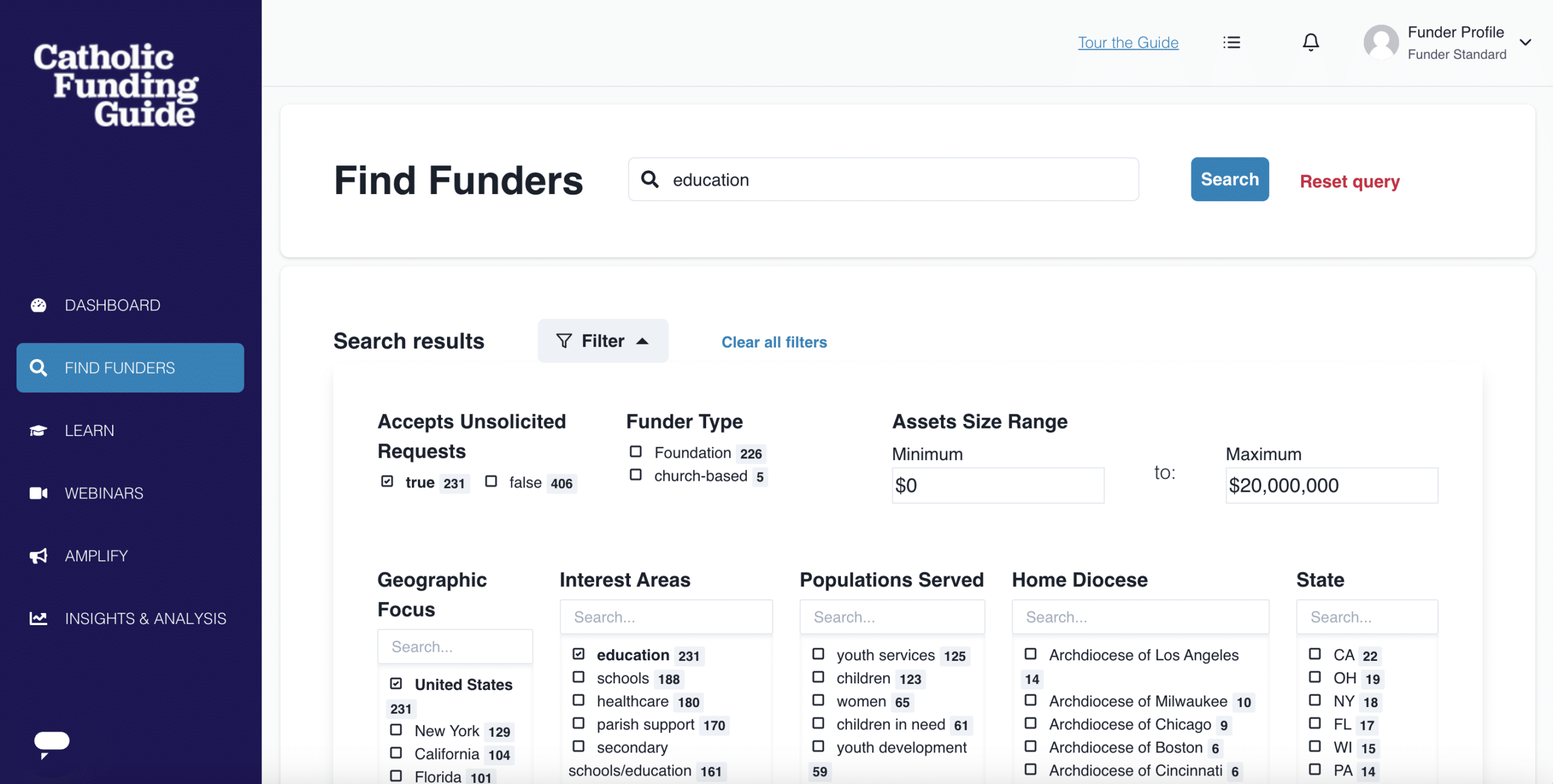“Catholic education is one of the most important challenges for the Church.”
– Pope Francis
The Role of Philanthropy in Catholic School Funding
As a Catholic philanthropist who supports Catholic schools, you are directly helping children and young adults to have access to high quality education and the many doors of opportunity that come with it. You are extending this important work of the Church to not only prepare students in a practical manner for their future, but to do good and live out their faith every day.
In addition, you are taking part in a long, rich history of Catholic education. Throughout the years, the Church has played a central role in the development of schools and has continued to be active in the teaching of our youth.
Catholic schools receive financial support from the generous donations of parents, alumni, and members of the community and local parish. Through a mix of small gifts and large investments, communities that come together to support their local Catholic schools often have schools and students that thrive.
In a broad sense: the future of Catholic education depends on Catholic philanthropists.
Why You Should Go Beyond Grants for Catholic School Funding
There are several benefits that come from exploring new funding options beyond the traditional method of grants. These include:
- Solve complex problems. Currently many Catholic schools are in need of more than grants. They need innovative funding plans to help them navigate complex financial situations.
- Offer much-needed support. By exploring a broader range of funding options, you can do more good by meeting needs that are not usually met, such as operating costs.
- Get your family involved. If you’ve been looking for ways to involve younger members of your family in your foundation or personal philanthropic efforts, thinking outside the proverbial box offers the chance to inspire them and involve them in the process.
- Grow roots in your community. When you are able to provide multi-faceted financial support or become a source of expertise and creative solutions for a Catholic school, the entire community benefits, which bolsters your relationships with local families and organizations.
- Leave a lasting impact. Although grants are an important and necessary facet of philanthropy, sometimes a school may still struggle when the grant ends. When you branch out beyond grants, you can often create long term success for the schools and programs you support, creating a lasting impact.
Impactful Ways to Give: Catholic School Funding Trends
Give from your donor advised fund.
For philanthropists looking for a versatile way to give—especially those who don’t necessarily have a foundation or vast amount of funds to exercise—giving from your donor advised fund can be a great option.
A “DAF” allows you to choose the recipient, size, and purpose of your gift. Similar to a grant but with less paperwork, giving from your DAF allows you to give in a more flexible way.
Create an endowment or scholarship fund.
This is a beautiful way to leave a legacy. Beyond that, it can bring Catholic schools a much-needed sense of security when they have been struggling with enrollment issues due to tuition costs.
The Catholic Foundation of Eastern Pennsylvania details how one couple, Matt and Sandi Lloyd, decided to give back by creating two endowment funds for Catholic schools in their area. Matt shared, “By setting up the endowments through the Catholic Foundation, we want to ensure these organizations have income for the future and they are here forever.”
Pursue community partnerships to maximize funding.
Many foundations, including Catholic education foundations, partner with community organizations or prominent companies to fund new programs. This allows you the opportunity to make an even bigger impact or support an initiative that you are unable to fund alone.
Big Shoulders Fund in Chicago, Illinois received funding from Citadel to participate in the “Chicago Connected” initiative, “one of the largest and longest-term efforts in the nation focused on providing free, high-speed internet service to qualifying students in their households.” Read the full story.
The same foundation also partnered with ComEd and United Way Metro Chicago to provide $450,000 towards STEM and skilled trades classes at four Catholic high schools, giving 1,000 students the opportunity to broaden their horizons. Read the full story.
Fund operations vs. programs
A growing number of Catholic schools are seeing a need for operations funding, but it is more difficult for them to find support because grants are not typically given for operating costs. If you provide funds specifically to be used towards utilities, payroll, maintenance, etc., you will help keep a school running in a fundamental way.
This allows administration to focus on education programs, recruitment, and community outreach rather than worry about how they will keep their doors open and cover day-to-day expenses.
On that note, it can be mutually beneficial for both the funder and the school to have a discussion around financial management to ensure there is a reliable structure in place. The school may need help with operating support now, but with a solid financial plan, may be able to sustain themselves in the future.
A growing number of Catholic schools are seeing a need for operations funding, but it is more difficult for them to find support because grants are not typically given for operating costs. If you provide funds specifically to be used towards utilities, payroll, maintenance, etc., you will help keep a school running in a fundamental way.
Get your family involved.
Do you have a family foundation? Have you been looking for ways to get younger family members involved in your philanthropic work? Ask for their ideas on how to approach Catholic school funding.
This sets the stage for younger family members to take a hands-on, problem-solving approach to giving, while allowing your family to courageously set a precedent for exploring new funding models.
Explore collaborative solutions for complex problems.
Sometimes a Catholic school may be facing such complicated financial issues that there is no apparent solution. This was the case with Risen Christ, a K-8 Catholic school in Minneapolis that was about to close permanently due to overwhelming debt. The school was saved by a collaborative, four-step plan developed by the GHR Foundation. Read the full case study and our blog post where we briefly discuss the plan.
If you are attempting to help a school facing a seemingly unsolvable problem, find inspiration in the story of Risen Christ. Meet with your foundation’s board members and school leadership to brainstorm a plan that tackles the issue methodically, even if it involves multiple steps and outside help from other philanthropists or the local community.
Take a long-term, comprehensive approach to funding.
If education is an area of interest to your foundation as a whole, consider incorporating it into your mission statement. This can help you focus on Catholic education in a strategic and targeted way.
Here are two examples of this. GHR Foundation supports three vital activities of Catholic schools: academic excellence, effective leadership, and a sustainable funding model. And the Catholic Education Foundation of Louisville, Kentucky provides support for four distinct programs: technology grants, tuition assistance, religious education, and professional development for teachers.
Taking a comprehensive approach unleashes a world of possibilities for the schools you support, while expanding your capacity for doing good and leaving a lasting impact.
Host financial literacy programs for school leadership and staff.
An old proverb states: “Give a man a fish, and you feed him for a day. Teach a man to fish, and you feed him for a lifetime.” Educating Catholic school leadership on financial matters such as debt consolidation can go a long way in equipping them for the future.
Take the next step and learn how to cultivate fruitful relationships with your grantees.
Did you know that with the Catholic Funding Guide you can search for specific projects in need of funding? Learn more.


